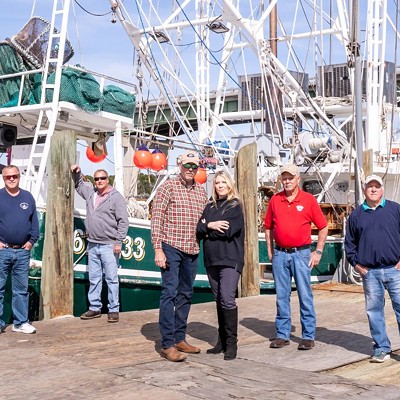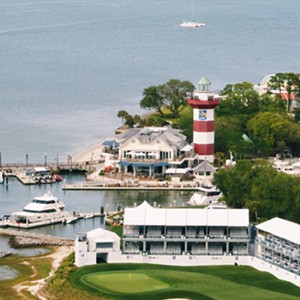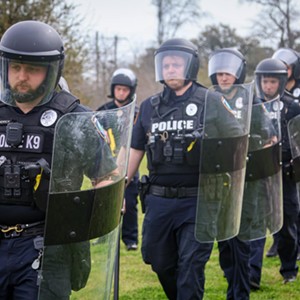Those wanting to invest in beachfront property for their great-grandchildren might consider looking west, not east, of Savannah, where a short drive offers a peek at a peculiar coastline of long ago.
From West Bay Street take Highway 21 North and follow the blue Evacuation Route signs that hug the road shoulder beyond Port Wentworth. Bypass Muther’s BBQ and continue on until Effingham County welcomes you.
As the road into Effingham begins to slope uphill, find a place to pull over and stop. Perhaps it’s not what you were expecting, but there’s your shoreline beneath the weeds and anthills.
Poke around and you’ll still find quartz sand, the same type of sand found on Tybee Island. Here was the high tide water mark during the planet’s last interglacial period (125,000 years ago), when temperatures were warmer and ice sheets thinner.
Although today the sounds of surf and seagulls are noticeably absent from this area, a report released in February, followed by a second report a few weeks ago, by the Intergovernmental Panel on Climate Change (IPCC) makes an Effingham seashore seem less like fantasy and more a reality of the centuries ahead, as the effects of climate change threaten to disfigure coastlines worldwide.
Established in 1988 by the World Meteorological Organization (WMO) and the United Nations Environment Program (UNEP), the IPCC appraises data on climate change from around the world, synthesizing thousands of reports from multiple fields into one palatable portrait of Earth’s shifting climate.
Every 5-7 years a report summary is released of the accumulated data, and predictions of changing weather patterns and ocean levels are forecast, with suggestions on how to best mitigate and/or adapt to those changes. The report released on February 2 stressed that global warming is “unequivocal, as is now evident from observations of increases in global average air and ocean temperatures, widespread melting of snow and ice, and rising global mean sea level.”
In the February report, the IPCC underlined the main impetus behind planetary warming was “very likely” (over 90 percent of scientists agree) greenhouse gas emissions produced by human activity.
According to Charles Watson, a Savannah-based geophysical hazard researcher and one of 2500 scientific reviewers of the IPCC report, the overwhelming consensus among scientists validates the significance of the report.
“If you can get 90 percent of scientists in the field to agree on something, that’s phenomenal,” says Watson. “We don’t agree about where to go for lunch, much less on data. To come up with this kind of a consensus from such a broad range group, I think it merits attention, and it merits serious consideration.”
Even with attention, serious consideration and/or immediate action, the IPCC report states the planet is already committed to a warming trend over several decades.
“It’s like a car, when you stomp on the accelerator or hit the brakes, it doesn’t instantly do what you tell it to do,” explains Watson. “That’s inertia, and the climate system has inertia. If we shut down emissions today, we’re going to keep coasting into a 2-3 degree Celsius warming, pretty much no matter what we do. Given the inertia, we better start thinking in terms of mitigation rather than prevention, because I think we’re already at or past that tipping point.”
Dr. Richard Jahnke, research scientist and Associate Director at the Skidaway Institute of Oceanography, insists the science is right on this issue -- whether people choose to believe it or not.
“The predictions aren’t going away, and they aren’t changing,” says Jahnke. “Think of all the people who live at the Landings, and if sea level goes up, even mildly, there will be all kinds of changes just in the physical nature of our area.”
According to the IPCC report, sea levels will rise over the next century due to a variety of factors attributed to warming. Scientists can only approximate by how much sea levels will rise -- some modest estimates suggest a little over half a foot to around a 2-3 foot rise.
“Those are conservative numbers (in the IPCC report) because they don’t add in any effects of melting ice,” says Jahnke. “They exclude that and that seems to be accelerating in the last 5-6 years. The concern about sea level rise is one that locally we should take very seriously.”
Low-lying coastal areas vulnerable to rises in sea level should pay particular attention to the rate of melting ice in the polar regions and on Greenland. According to the IPCC, if temperatures continue to rise, the ice sheet covering Greenland could disappear entirely, and that bodes ill for places like Savannah.
“If Greenland does become completely unstable and all that ice melts, that’s another 18-19 feet,” Jahnke contends, explaining those extra feet are added on top of already predicted rises in sea level.
“That would be a huge effect, and not just on the Landings and Tybee, but there are a lot of low-lying areas in downtown Savannah. Savannah would be more or less an island if it could survive the erosion problems- and Manhattan and Charleston and Miami would all suffer the same thing.”
While scientists aren’t able to predict with exact certainty how fast this will happen, Charles Watson argues it could happen sooner than we think.
“People tend to think in terms of their short little lives, and they think Savannah will be here in 200 years,” says Watson. “We may be flooded out in 50 years. Imagine having the disruption, and imagine the thousands of Savannahs being replicated around the U.S., and the hundreds of thousands of cities around the world having to be evacuated.”
Scientists are just beginning to understand the dynamics of ice melt, but current observations of glacial shrinkage have sounded many alarm bells for those who assumed the process would be much slower.
“Those big ice sheets tend to disintegrate faster than we thought they could,” Watson explains. “The ice dynamics are really starting to say scary stuff. You’re looking at things falling apart, ice sheets collapsing and melting, over the course of decades rather than centuries.”
Though he doesn’t want to sound like an alarmist, Watson argues the shrinking of ice caps and break away of glaciers have direct consequences for low-lying regions.
“There’s a significant possibility that within our lifetimes, if we melt, say the Greenland ice sheet, then all this goes underwater,” says Watson.
While slow-moving catastrophes like ocean expansion and glacial melt may be difficult to prepare for, much less prevent, hurricanes are a persistent threat. “The tropics are predicted to get warmer, no matter what happens,” says Dr. Richard Jahnke. “The planet will continue to get warmer, and that’s what fuels hurricanes in the tropics. Storms in general- wind storms and rain storms- could become more severe.”
Charles Watson, whose company monitors and studies tropical storm/cyclone activity around the world, claims the data is showing support for projections of increased hurricane intensity.
“One of the theories is that the number of hurricanes may not change very much, but the ones we do get would be stronger and further north than they have been,” says Watson, who helps government agencies and international organizations such as the World Bank and the World Food Program prepare for natural disasters and better mitigate those events when they occur.
“The stuff I work with, on the disaster side of things, it’s pretty grim,” he says. “You throw in a little sea level rise with maybe slightly stronger storms, and you’ve got a real mess on the coast.”
Ideally this would change how communities develop along the coast. Watson’s company offers those governments and building firms two engineering analyses to choose from: an analysis which incorporates predicted changes in climate as a result of planetary warming, and one that does not.
Governments in the Caribbean and Central America are now choosing models that incorporate climate change. This has not been the case in the U.S.
“The feedback I get from engineering firms here in the U.S. is ‘politically that’s so hot, there’s no way we’re going to a client with a design that says we’re incorporating climate change into our design,’” says Watson. “The problem is the decision-making process has become corrupt, because it’s become politicized.”
The politicization worries Watson.
“If you look at what Georgia is doing, they’re doing the wrong thing. You’ve got stronger storms, and they’re lasting longer. That means the coast is more vulnerable. That means maybe we need to review our coastal development regulations,” he says.
“There are a lot of policy decisions you can make -- some of them are more left, some of them are more right -- I don’t care. Let’s just deal with the data; let’s deal with the situation.”
Dr. Jahnke at the Skidaway Institute also insists that politics, helped along by the Internet, has upset the scientific process.
“In this day and age of the Internet, which is a wonderful thing, there’s a lot of misinformation,” he says.
“If you have a really strong political agenda and you want to try and push it, one of the most effective ways is to put so much misinformation on the Internet that well-meaning people really don’t know what to believe.”
Despite the sluggish response from government in the past, both Watson and Jahnke anticipate a change in the political climate, especially now that the price of ignoring or disbelieving the problem is simply too high.
“You can see trends in human diseases, in brain disease pathogens, in climate, in sea level rise, in geophysics,” says Jahnke of the consequences of rapid climate change. “It’s going to affect lots of areas of life. I personally would be happily wrong. I think most scientists would.”
To comment e-mail us at [email protected]

























